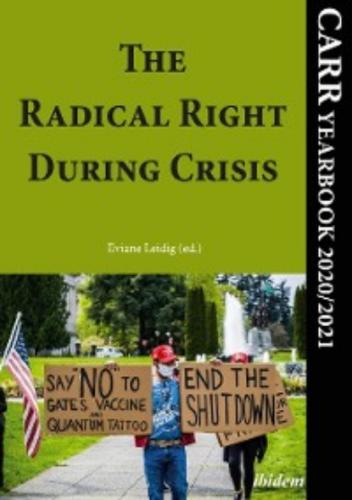The Radical Right During Crisis. Группа авторов
Fidesz have altered the national curriculum3 to be “more patriotic”, replaced the EU flag4 on the Hungarian parliament building with that of the Szeklers (a Hungarian-speaking ethnic group in Transylvania), openly support autonomy for the Szeklerlands in Transylvania,5 regularly speak at the annual Bálványos Summer Free University and summer camp in the Szeklerlands, and have been financing6 Hungarian-language media,7 football clubs, and churches in Transylvania.
Orbán’s gestures towards the Transylvanian-Hungarian and Szekler minorities have not gone unnoticed by the Romanian government, incidentaly led by their very own (Ludovic) Orban, who reacted in 2020 by declaring 4 June a national holiday8 in Romania. Indeed, the Szeklerlands have become the centre of Orbán’s irredentist crusade, although he himself stated that he is not seeking to reunite all of the lost Hungarian lands.9 One must wonder, then, what his motives are beyond simple ethno-nationalism.
4 June is memorialised annually by the Hungarian government, with the day being commemorated as the Day of National Unity in 2010. Indeed, Trianon is such a crucial part of the Hungarian collective memory that a rock opera was created about it in 2018.10 2020, however, brings particularly special meaning in its centennial anniversary of the treaty; so much so, in fact, that the Hungarian government commissioned a memorial monument in front of the parliament in Budapest in April 2019 to be finished for the centennial anniversary (which it was not).11 Called the “National Unity Memorial”, the subterranean monument features the names of the nearly 13,000 settlements Hungary lost to Trianon.
Outside of the Hungarian parliament, the treaty is memorialised and mourned by the radical right; indeed, 4 June is one of the biggest days of the year for these organisations. In 2020, there is increased anger surrounding Trianon related to the treaty being originally signed for 100 years: a notional expiration date due for the 2020 anniversary. For the centennial, even COVID-19 could not stop the protests and memorials. 5 June saw the annual protest march (the article features a video about the march, with interviews in Hungarian) organised by the Sixty-Four Counties Youth Movement,12 a radical right youth organisation centred around the reversal of the treaty. The organisation was founded by the leader of the new Our Homeland Movement political party, who also spoke at the event. Videos of the protest show organisation members, various people young and old, and families with children in attendance.
Several radical right organisations made statements in honour of the anniversary. The Hungarian Defence Movement, which portrays itself as a community and family-oriented volunteer organisation, had a week-long commemoration visiting various Trianon memorials around Hungary. The radical right rock band Kárpátia wrote a song for the occasion. Some have voiced a victimisation and portrayal as Trianon as a Hungarian genocide, as did the extremist Outlaw Army organisation who stated, ‘they sentenced us to death, yet we’re still alive’.13 Légió Hungária, a newer Hungarian white power organisation, created a video to commemorate Trianon 100 stating that, ‘Our message on the 100th anniversary of Trianon must be that Hungarian identity and Hungarian land will be kept Hungarian, where for one thousand years Hungarians have been born and Hungarians determined the culture. One thousand years from now should be the same’.14 These organisations have frequently spoken out about ethnic Hungarians across the borders, with the Sixty-Four Counties Youth Movement even having branches in the Szeklerlands.
Such a parallel between the Hungarian radical right and Hungarian government’s rhetoric is nothing if not cause for concern. It is also questionable as to what the continued tension between Hungary and Romania will mean for the future of the region. At any rate, Orbán’s not-so-subtle nod to Hungarism and Admiral Horthy are worthy of Europe’s attention as the country slips further into its “illiberal turn”.
Dr Katherine Kondor is a Senior Fellow at CARR and research associate on the “Illiberal Turn” project at Loughborough University.
1 “VARIOUS: Ethnic Hungarians Remember How Their Families Were Divided by the Trianon Peace Treaty of 1920,” Reuters, June 7, 2010, https://reuters.screenocean.com/record/478169.
2 Lucie Szymanowska, “The iImplementation of the Hungarian Citizenship Law,” OSW, February 2, 2011, https://www.osw.waw.pl/en/publikacje/analyses/2011-02-02/implementation-hungarian-citizenship-law.
3 Edit Inotai, “Democracy Digest: Hungary’s Curriculum cCusade,” Balkan Insight, February 7, 2020, https://balkaninsight.com/2020/02/07/democracy-digest-hungarys-curriculum-crusade/.
4 Csaba Tóth, “President of Hungarian Parliament Orders Removal of EU Flag,” Budapest Beacon, November 17, 2014, https://budapestbeacon.com/president-hungarian-parliament-orders-removal-eu-flag/.
5 For example: Stefano Bottoni, “Szeklerland as the New Crimea?,” Visegrad Insight, May 16, 2014, https://visegradinsight.eu/szeklerland-as-a-new-crimea1652014/; Cristian Gherasim, “Bucharest and Budapest in ‘Autonomy’ Region Row,” EU Observer, May 4, 2020, https://euobserver.com/political/148232.
6 Akos Keller-Alant, “Living Like in Hungary: Orban Bankrolling Romania ‘Ethnic Parallelism’,” Balkan Insight, January 30, 2020, https://balkaninsight.com/2020/01/30/living-like-in-hungary-orban-bankrolling-romania-ethnic-parallelism/.
7 Craig Turp-Balazs, “New Report Reveals Hungary’s Creeping Influence on Transylvania Media Market,” Emerging Europe, July 18, 2019, https://emerging-europe.com/news/new-report-reveals-hungarys-creeping-influence-on-transylvania-media-market/.
8 “Hungarian Press Roundup: Romania Declares Trianon Day a National Holiday,” Hungary Today, May 21, 2020, https://hungarytoday.hu/hungarian-press-romania-trianon-day/.
9 Gergely Nyilas, “Orbán Szerint Emlékezni Kell, De Trianonozni Nem,” Index, January 9, 2020, https://index.hu/belfold/2020/01/09/orban_viktor_sajtotajekoztato_karmelita_kolostor_orbaninfo/orban_szerint_emlekezni_kell_de_trianonozni_nem/.
10 Shaun Walker, “Hungarian Nationalist Rock Opera to Retell 1920s Grievances,” The Guardian, June 22, 2018, https://www.theguardian.com/world/2018/jun/22/hungarian-nationalist-rock-opera-to-retell-1920s-grievances.
11 Nick Thorpe, “The 100-year Wound That Hungary Cannot Forget,” BBC News, June 3, 2020, https://www.bbc.com/news/world-europe-52903721.
